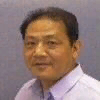
Xu Huang
Work place: Faculty of ESTeM, University of Canberra, Australia
E-mail: Xu.Huang@canberra.edu.au
Website:
Research Interests: Engineering, Computer systems and computational processes, Computational Engineering, Computational Science and Engineering
Biography
Professor (Dr) Xu Huang has received the B.E. and M.E. degrees and Ph.D. in Electrical Engineering and Optical Engineering prior to 1989 and the second Ph.D. in Experimental Physics in the University of New South Wales, Australia in 1992. He has earned the Graduate Certificate in Higher Education in 2004 at the University of Canberra, Australia. He has been working on the areas of the telecommunications, cognitive radio, networking engineering, wireless communications, optical communications, and digital signal processing more than 30 years. Currently he is the Professor at the Faculty of Education Science Technology & Mathematics. He has been a senior member of IEEE in Electronics and in Computer Society since 1989 and a Fellow of Institution of Engineering Australian (FIEAust), Chartered Professional Engineering (CPEng), a Member of Australian Institute of Physics. He is a member of the Executive Committee of the Australian and New Zealand Association for Engineering Education, a member of Committee of the Institution of Engineering Australia at Canberra Branch. Professor Huang is Committee Panel Member for various IEEE International Conferences such as IEEE IC3PP, IEEE NSS, etc. and he has published about two hundred papers in high level of the IEEE and other Journals and international conference; he has been awarded 9 patents in Australia.
Author Articles
Bio-chip Design Using Multi-rate System for EEG Signal on FPGA
By Nazifa Tabassum Sheikh Md. Rabiul Islam Xu Huang
DOI: https://doi.org/10.5815/ijigsp.2018.04.05, Pub. Date: 8 Apr. 2018
Digital Signal Processing (DSP) is one of the fastest growing techniques in the electronics industry. The signal-rate system in digital signal processing has evolved the key of fastest speed in digital signal processor. Field Programmable Gate Array (FPGA) offers good solution for addressing the needs of high performance DSP systems. The focus of this paper is on the basic DSP functions, namely filtering signals to remove unwanted frequency bands. Multi-rate Digital Filters (MDFs) are the main theme to build bio-chip design in this paper. For different purposes DSP systems need to change the sampling rate of the signal to achieve some applications. This can be done using multi-rate system where designers can increase or decrease the operating sampling rate. This bio-chip has attractive features like, low requirement of the coefficient word lengths, significant saving in computation time and storage which results in a reduction in its dynamic power consumption. This paper introduces an efficient FPGA realization of multi-rate digital filter with narrow pass-band and narrow transition band to reduce noises and changing the frequency sampling rate by factor which is required according to application. This bio-chip works on bio-signals like EEG signal.
[...] Read more.Simultaneous Image Fusion and Denoising based on Multi-Scale Transform and Sparse Representation
By Tahiatul Islam Sheikh Md. Rabiul Islam Xu Huang Keng Liang Ou
DOI: https://doi.org/10.5815/ijigsp.2017.06.05, Pub. Date: 8 Jun. 2017
Multi-scale transform (MST) and sparse representation (SR) techniques are used in an image representation model. Image fusion is used especially in medical, military and remote sensing areas for high resolution vision. In this paper an image fusion technique based on shearlet transformation and sparse representation is proposed to overcome the natural defects of both MST and SR based methods. The proposed method is also used in different transformations and SR for comparison purposes. This research also investigate denoising techniques with additive white Gaussian noise into source images and perform threshold for de-noised into the proposed method. The image quality assessments for the fused image are used for the performance of proposed method and compared with others.
[...] Read more.Other Articles
Subscribe to receive issue release notifications and newsletters from MECS Press journals